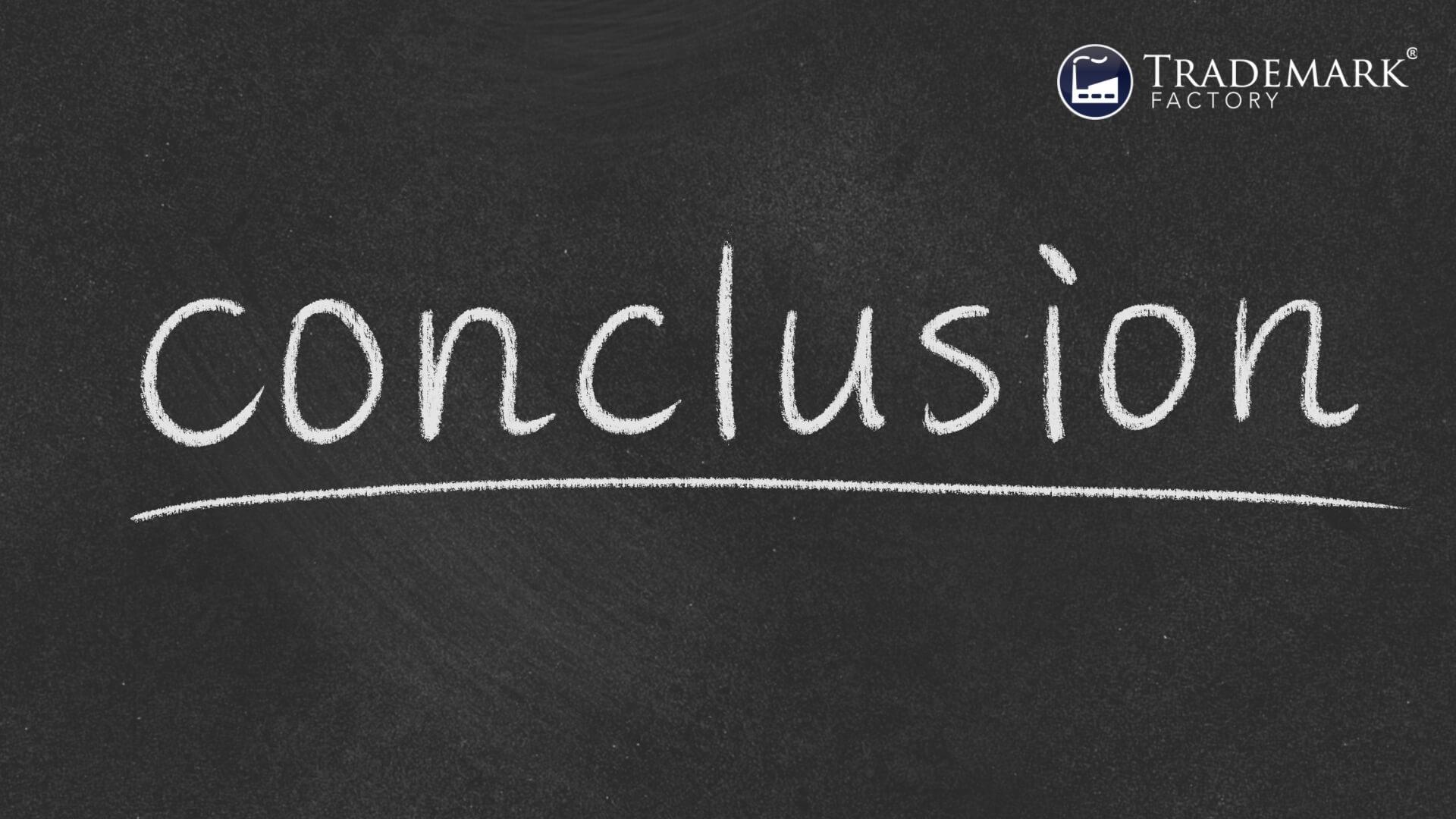Understanding Trademark Application Fees

The financial aspect of the trademark registration process is a crucial element that should not be overlooked by individuals or businesses seeking to protect their intellectual property. A comprehensive understanding of the various fees associated with trademark applications is essential in order to effectively navigate the process and ensure that one's valuable assets are safeguarded. By acquiring knowledge about the different types of application fees, as well as factors that influence these costs, applicants can make informed decisions and allocate resources appropriately to ensure a smooth trademark registration process.
In today's highly competitive market, obtaining a trademark for one's brand or product offers a significant advantage in terms of establishing an identity and creating consumer loyalty. However, this advantage comes at a price in the form of application fees which vary depending on several factors such as type of mark, scope of protection sought, and geographical jurisdiction. It is imperative for potential applicants to have an accurate estimate of these expenses so they can effectively budget for them without compromising other aspects of their business operations. This article delves into the intricacies surrounding trademark application fees and provides guidance on how to manage these costs efficiently while maximizing the benefits derived from successfully registering one's mark.
Introduction: The Financial Aspect of Trademark Applications

Navigating the monetary intricacies of the steps of pre registering trademarks or brand identity is crucial for applicants to ensure a smooth and successful process. Trademark affordability can be challenging, especially for small businesses and individuals, but understanding fee negotiations, identifying hidden costs, exploring payment plans, and seeking fee waivers are vital in managing financial commitments effectively. A comprehensive analysis of these factors allows applicants to make well-informed decisions in allocating resources towards protecting their intellectual property rights. Moreover, being knowledgeable about various trademark application fees helps foster a sense of belonging among the community of brand owners who share similar challenges in securing their marks. Consequently, delving into the different types of trademark application fees sets the foundation for a more confident approach in asserting one's brand value within the competitive market landscape.
Understanding the Different Types of Trademark Application Fees

Delving into the types of trademark application fees, it is crucial to examine the various components that contribute to these costs, as well as the factors that shape their differentiation. By breaking down trademark application fees, one can gain a comprehensive understanding of how they are determined and categorized for various types of trademarks. This analytical approach enables individuals and businesses to make informed decisions in relation to their intellectual property protection endeavors while navigating the complexities of trademark application processes.
Breaking Down Trademark Application Fees
Examining the various expenses associated with each phase of the trademark registration process offers valuable insight into the overall financial commitment involved. Trademark affordability is a crucial aspect for businesses and individuals looking to protect their intellectual property, thus understanding government fee structures, fee payment options, and possible fee waivers becomes essential. Furthermore, being equipped with fee negotiation tips can be beneficial in managing costs effectively during this process. Analyzing these elements not only sheds light on how much one should be prepared to invest but also highlights potential strategies for minimizing expenses without compromising on legal protection. As we delve deeper into this subject matter, it is important to consider the factors that shape different trademark application fees and their role in determining an applicant's financial obligations throughout this journey.
The Factors that Shape Different Trademark Application Fees
Diving into the key components that influence various trademark registration costs enables a comprehensive assessment of an individual's financial responsibilities throughout this process. Trademark affordability is contingent upon several factors, such as class, type, and country of application. For instance:
1. The number of classes in which an applicant seeks protection can directly impact costs, with more classes leading to higher fees.
2. The type of mark being applied for—whether it is a standard character mark or a stylized logo—may also affect fees.
3. Lastly, the country in which the trademark is registered plays a significant role in determining expenses due to differing national fee structures.
Further intricacies arise from issues like hidden costs, financing options, and fee waivers that are tied to complexity and dispute resolution during the application process. Fee negotiation may be necessary when dealing with legal representation or specialized services throughout this journey. By understanding these aspects influencing trademark application fees, applicants can better anticipate their financial obligations and strategically plan for success without compromising their desire for belonging within their chosen market space. This knowledge ultimately paves the way towards discussing specific factors that influence the cost of trademark application fees in greater detail.
Factors that Influence the Cost of Trademark Application Fees

Determinants of trademark application costs encompass various factors, such as the type of application filed, the number of classes registered, and additional government fees. The role of professional services in trademark application costs also significantly impacts the overall expense involved in securing a trademark. Engaging trademark attorneys or agents can enhance the likelihood of successful registration but may contribute to increased costs due to their expertise and assistance throughout the process.
Determinants of Trademark Application Costs
A thorough analysis of the factors of trademark fees that contribute to the costs associated with filing a trademark application reveals the significance of aspects such as the number of classes, regions, and complexity involved. In order to achieve trademark affordability, it is essential for applicants to consider these determinants when evaluating their options and engaging in fee negotiation. Firstly, government charges play an important role in determining overall cost since each class of goods or services requires separate registration fees. Secondly, cost comparisons should be assessed when determining international scope since registering trademarks across multiple regions can significantly escalate expenses. Thirdly, fee waivers may be available for small businesses or individuals who demonstrate financial need; however, complex applications often necessitate additional resources and professional assistance which can further impact costs. Understanding these intricacies not only aids in budgeting but also ensures that applicants are well-equipped when approaching professional services, thereby minimizing any unforeseen expenses and allowing for a smoother transition into exploring the role of professional services in trademark application costs.
The Role of Professional Services in Trademark Application Costs
Evaluating the impact of professional services on the overall expenses associated with registering a trademark is crucial for applicants seeking cost-effective solutions and expert guidance throughout the process. Trademark consultants offer valuable assistance in navigating a complex legal landscape, ensuring that all necessary steps are taken to secure intellectual property rights effectively. While these services come at a price, their expertise often results in significant savings by avoiding costly mistakes and delays. Moreover, fee negotiations can be conducted with these professionals to optimize pricing structures according to budget constraints and specific requirements. As such, engaging professional services contributes not only to successful trademark registration but also provides an opportunity for applicants to balance costs while benefiting from specialized knowledge and experience. To make informed decisions about allocating resources during the trademark application process, it is essential to understand how various factors contribute to calculating the total cost of trademark application fees in the subsequent section.
How to Calculate the Total Cost of Trademark Application Fees

To accurately estimate the total cost of trademark application fees, it is essential to consider all relevant components, such as filing fees, attorney fees, and additional expenses for conducting searches or responding to office actions. Utilizing various tools and resources, including fee calculators provided by intellectual property offices and professional consultation services, can greatly assist in determining a comprehensive budget for this process. An analytical approach to identifying and quantifying these factors ensures that applicants are well-informed about the financial implications of seeking trademark protection for their intellectual property assets.
Components of Total Trademark Application Cost
Delving into the various expenses associated with registering a trademark reveals a multitude of components, such as potential legal fees, search costs, and international charges. To better understand these elements and achieve trademark affordability, it is essential to consider: 1) fee exemptions that might be available for certain applicants; 2) financial assistance options provided by government agencies or professional organizations; 3) cost comparisons between different registration routes (e.g., national versus international); and 4) application discounts offered by attorneys or online filing services. By carefully examining each of these factors while keeping in mind their subconscious desire for belonging, applicants can make informed decisions about their trademark registration process. In the next section, we will explore tools and resources that aid in calculating trademark costs with ease.
Tools and Resources for Calculating Trademark Costs
Having examined the various components that contribute to the total cost of a trademark application, it is essential to explore tools and resources that can assist in accurately estimating these expenses. Trademark calculators serve as valuable instruments for obtaining a clear understanding of potential fees involved in the process by providing up-to-date information on costs associated with specific services and filings. Utilizing fee resources such as the USPTO's fee calculator will ensure an accurate cost assessment while also factoring in any potential unforeseen expenses. Additionally, conducting cost comparisons between different filing options, seeking budgeting tips from professionals, and obtaining professional assistance when necessary will further aid applicants in effectively managing their budgets throughout the trademark registration process. With a thorough understanding of available tools and resources for calculating trademark costs, one can confidently navigate the complexities of this financial aspect and be better prepared to address the importance of budgeting for trademark application fees in order to protect intellectual property investments.
The Importance of Budgeting for Trademark Application Fees

Budgeting for trademark application fees is a crucial aspect of successful trademark planning, as it enables businesses to allocate sufficient resources for this process and avoid unexpected costs. Developing effective strategies for trademark budgeting helps ensure the appropriate funds are set aside and allows organizations to prioritize the most valuable trademarks within their portfolios. By implementing a well-structured budget plan, businesses can better navigate the often complex trademark registration process while safeguarding their intellectual property assets.
Budgeting as a Key Part of Trademark Planning
Incorporating financial foresight into the initial stages of brand protection strategy is crucial for effectively navigating the complexities associated with registering and maintaining intellectual property rights. Trademark forecasting, which involves anticipating potential costs and budgetary requirements, plays an essential role in this process. By identifying potential fee negotiation opportunities and hidden expenses early on, businesses can make informed decisions about resource allocation and prioritize their trademark investments accordingly. This level of meticulous financial planning allows organizations to create adaptive budget adjustments as they work through the various phases of trademark registration, ultimately enhancing their ability to protect valuable intellectual property assets without jeopardizing other aspects of their operations. Moreover, engaging in such detailed analysis fosters a sense of belonging among stakeholders by demonstrating a commitment to safeguarding both individual contributions and collective brand identity. With this strong foundation in place, companies are better prepared to delve into strategies for effective trademark budgeting that further optimize resources and strengthen their competitive positioning within the market.
Strategies for Effective Trademark Budgeting
Developing robust strategies for efficient allocation of financial resources in the realm of intellectual property protection is crucial to ensure long-term brand security and competitiveness in today's dynamic market landscape. To achieve this, businesses should consider several factors that can contribute to effective trademark budgeting:
- Trademark prioritization:
* Identifying core trademarks that hold significant value to the business
* Focusing on protecting these essential assets first before expanding to other marks
- Fee negotiation techniques:
* Exploring opportunities to negotiate with legal professionals or service providers
* Utilizing bulk discounts, if applicable, when filing multiple applications
- Cost saving research:
* Investigating possible exemptions or reduced fees based on jurisdictional rules
* Assessing the likelihood of success before committing resources to a particular application
- DIY application tips:
* Gaining familiarity with online filing systems offered by government agencies
* Understanding basic requirements and procedural steps for submitting an application without external assistance
- Alternative funding options:
* Seeking grants or other financial support specifically targeted towards IP protection
* Collaborating with other businesses or entities in similar industries who may be willing to share costs related to joint filings
By implementing these strategic approaches, organizations can optimize their budget while maintaining a strong focus on comprehensive intellectual property protection. In addition, it becomes essential to explore various methods aimed at reducing trademark application fees further.
Strategies for Reducing Trademark Application Fees

In order to reduce the financial burden associated with trademark application fees, it is essential to explore strategies that streamline the Trademark Application Process and implement cost-effective practices. By optimizing these processes, applicants can efficiently navigate through various stages of application while mitigating undue expenses. A thorough analysis of these strategies will provide valuable insights for potential trademark holders seeking to protect their intellectual property without incurring excessive costs.
Streamlining the Trademark Application Process
Efficiently navigating the intricacies of the trademark application process can significantly reduce costs and prevent unnecessary expenses. Trademark efficiency can be achieved through careful pre-application research, ensuring that potential infringements or similarities to existing marks are addressed before submission. Additionally, applicants may opt for expedited applications when time is of the essence, and utilizing digital submissions can further streamline the process by reducing paperwork and mailing costs. It is also essential to explore fee waivers or reductions offered by certain jurisdictions, which can significantly alleviate financial burdens associated with trademark registration. Furthermore, diligent application monitoring allows applicants to address any issues promptly, minimizing potential delays in obtaining a registered mark. By employing these strategies, businesses and individuals alike can ensure a smooth trademark application process while preserving valuable resources for future endeavors. This approach ultimately leads to cost-effective trademark application practices that optimize outcomes for all parties involved.
Cost-Effective Trademark Application Practices
Adopting strategic and budget-conscious methods in the registration process can significantly enhance the overall affordability and success rate for securing intellectual property protection. Implementing effective trademark strategies, such as conducting thorough research on existing trademarks to avoid potential conflicts, can lead to a smoother application process and reduced legal fees. Additionally, fee negotiation with professional service providers may result in lower costs for their assistance in filing applications and managing intellectual property portfolios. Utilizing online applications through platforms like the United States Patent and Trademark Office (USPTO) not only offers discounted filing fees but also streamlines the submission process. When evaluating cost comparisons between various service providers, it is crucial to consider hidden expenses that might arise due to application errors or unforeseen circumstances during the registration phase. With these factors in mind, businesses seeking trademark protection should weigh their options carefully before choosing a cost-effective solution that aligns with their goals and financial resources.
1. Thorough research on existing trademarks
2. Fee negotiation with professional service providers
3. Utilizing online applications for discounted filing fees
4. Evaluating cost comparisons while considering hidden expenses
Understanding common mistakes that can increase trademark application fees will help applicants avoid pitfalls during the registration process and ensure better financial management of their intellectual property assets.
Common Mistakes that Can Increase Trademark Application Fees

The trademark application process presents various mistakes that may lead to increased fees and potential complications. To mitigate such occurrences, it is essential to explore strategies for avoiding costly mistakes throughout the application procedure. A thorough understanding of these challenges and their respective solutions facilitates a more streamlined, cost-effective approach to obtaining and maintaining a legally protected brand identity.
Pitfalls in the Trademark Application Process
Navigating the intricacies of the trademark application process requires a thorough comprehension of potential pitfalls, as missteps can lead to increased expenses and delays in securing intellectual property protection. Trademark pitfalls often stem from application challenges such as incomplete or incorrect information submission, which may result in costly errors that escalate fees through disputes and objections. Moreover, registration obstacles may arise due to inadequate research on pre-existing trademarks, leading to potential infringement claims and further fee management complications. To mitigate these issues, it is imperative for applicants to be well-versed in all aspects of the trademark application process and adopt strategies for avoiding costly trademark mistakes, which will be discussed in detail in the subsequent section.
Strategies for Avoiding Costly Trademark Mistakes
To circumvent the financial repercussions of errors in the intellectual property protection process, it is crucial to employ well-planned strategies that address potential pitfalls and promote meticulous research. Some key factors to consider for budget-friendly applications and cost-saving tips include:
- Identifying trademark pitfalls early, such as conducting extensive searches for existing similar trademarks and avoiding generic or descriptive names
- Implementing fee management processes by understanding the various costs associated with trademark registration, including application fees, attorney fees, and potential opposition proceedings
- Leveraging professional guidance from experienced legal advisors who can help navigate complex trademark laws and regulations
- Exploring alternative solutions for protecting your brand assets such as registering multiple variations of a mark or considering domain name registrations
By focusing on these tactics, businesses can effectively manage expenses while ensuring adequate intellectual property protection. As we delve into international trademark registration's impact on application fees, it becomes increasingly essential to maintain a comprehensive approach towards safeguarding one's brand identity.
The Impact of International Trademark Registration on Application Fees

The impact of international trademark registration on application fees warrants thorough deliberation, particularly in relation to the costs associated with obtaining protection across multiple jurisdictions and the need to strike a balance between comprehensive international protection and cost-efficiency. A comparative analysis of international registration costs is essential for informed decision-making as well as understanding the implications of different routes to secure global trademark rights. Moreover, recognizing potential avenues for cost optimization can aid applicants in devising strategies that maximize protection while minimizing expenses.
International Trademark Registration Costs
In the realm of international trademark registration, costs can vary significantly depending on factors such as the number of countries involved and the specific agreements in place, including the Madrid Protocol. Global fee variations arise due to differences in government fees, attorney charges, and other associated expenses across countries. Additionally, exchange rate impact plays a crucial role in determining overall costs for applicants from different nations. Language translation costs also come into play when filing applications in multiple jurisdictions with diverse linguistic requirements. Regional legal challenges may further escalate expenses if local laws demand additional documentation or procedures that deviate from standard international practices. In some cases, fee waiver options might be available to certain applicants based on their eligibility criteria or socioeconomic status; however, this is not universally applicable across all member countries of international treaties governing trademark protection. Ultimately, businesses and individuals must carefully weigh the benefits of securing robust intellectual property rights against these varying financial considerations before devising an appropriate strategy for global expansion - a topic which will be further explored in the subsequent section about 'balancing international protection and cost.'
Balancing International Protection and Cost
Navigating the intricate landscape of global intellectual property rights requires a strategic approach that effectively balances the desire for comprehensive protection with the realities of financial constraints and diverse legal frameworks. To achieve this balance, businesses should carefully evaluate their international considerations and adopt cost-saving tips to maximize the value of their trademark investments. In this pursuit, several key factors can be employed in order to make informed decisions:
- Thoroughly research target markets to determine where trademark registration is most crucial for business growth and minimizing infringement risks.
- Explore regional agreements or systems like the Madrid Protocol that can streamline the registration process and reduce costs across multiple jurisdictions.
- Be selective in attorney selection by comparing expertise, reputation, and fee structures to identify counsel who will provide both effective representation and reasonable pricing.
- Assess payment timelines offered by various jurisdictions' trademark offices or attorneys, as some may have flexible schedules that could ease cash flow burdens during periods of high expenditures.
- Engage in proactive future planning by monitoring emerging markets relevant to your industry and evaluating potential expansions into those territories before making final decisions on which countries to include in your international protection strategy.
By embracing these tactics, businesses can more efficiently allocate resources towards building a robust trademark portfolio while mitigating excessive application fees. The role of trademark attorneys in managing these fees cannot be understated – they are invaluable partners who help navigate complex legal terrains on behalf of their clients.
The Role of Trademark Attorneys in Managing Application Fees

Navigating the complex landscape of trademark application fees can be made significantly easier with the assistance of a knowledgeable and experienced trademark attorney. Selecting an appropriate legal professional who aligns with an applicant's budgetary constraints is crucial to ensure cost-effective management of these fees because of an experienced trademark attorney. A thorough understanding of how attorneys aid in reducing expenditure, while safeguarding the client's interest, forms a pivotal aspect of any discussion on the role played by trademark attorneys in managing application fees.
How Attorneys Can Help Navigate Trademark Costs
Adept legal counsel can effectively steer clients through the intricacies of intellectual property expenses, ensuring a judicious allocation of resources in safeguarding their brand. Trademark assistance from seasoned attorneys encompasses not only expert guidance on protecting valuable assets but also skillful fee negotiation to secure optimal outcomes while adhering to budgetary constraints. By leveraging their comprehensive knowledge of trademark law and cost structures, attorneys provide invaluable support in mitigating financial risks associated with the application process, ensuring that all requisite fees are accounted for and strategically allocated. Moreover, an attorney's ability to anticipate potential challenges and identify cost-effective solutions fosters a sense of belonging among clients who trust their legal representative to protect their interests diligently. Ultimately, selecting an attorney attuned to one's financial requirements is crucial for achieving both branding protection and fiscal prudence in trademark endeavors.
Choosing the Right Trademark Attorney for Your Budget
Selecting the appropriate legal counsel who aligns with one's financial constraints is a critical aspect in ensuring cost-effective and efficient management of intellectual property matters. When choosing the right trademark attorney for your budget, it is essential to consider various factors to optimize the balance between quality representation and affordable legal services. These factors include:
- **Experience:** Seek an attorney with a proven track record in trademark law, as this can provide assurance of their ability to deliver cost-conscious representation.
- **Transparent fee structure:** A budget-friendly lawyer should clearly outline their fees upfront, allowing clients to make informed decisions about potential costs involved.
- **Flexible payment options:** Attorneys who offer alternative billing arrangements, such as flat fees or installment plans, may be more accommodating to those working within a specific budget.
- **Efficient communication:** Effective communication from your chosen attorney not only streamlines the process but also helps avoid unnecessary expenses resulting from misunderstandings or delays.
- **Referrals and reviews:** Soliciting recommendations from trusted sources and researching online reviews can help identify reputable trademark attorneys who offer value for money.
By carefully assessing these aspects during the trademark attorney selection process, individuals and businesses can better manage their attorney budget while still receiving quality legal support. This approach ultimately paves the way towards maximizing return on investment in intellectual property assets, which will be further explored in the discussion on 'the benefits of paying trademark application fees early.'
The Benefits of Paying Trademark Application Fees Early

Paying trademark application fees early can significantly impact the success of the application process, as it expedites examination and registration, providing a competitive edge in securing exclusive rights. Adopting strategies for early trademark fee payment, such as budgeting and prioritizing resources towards these expenses, ensures minimal delays in processing while mitigating potential legal disputes. A thorough understanding of the benefits associated with early payment further underscores its importance in safeguarding intellectual property rights and fostering sustainable business growth.
Early Payment and Trademark Application Success
The timely submission of requisite payments can greatly influence the overall success and duration of one's trademark application process, as it ensures compliance with USPTO guidelines and avoids unnecessary delays. Early success in obtaining a trademark registration may be facilitated by proactive fee negotiation, consideration of various payment methods, seeking available fee waivers, and exploring potential application incentives offered by the USPTO. By strategically navigating these factors, applicants may experience expedited processing times and increased likelihood of approval for their desired trademarks. Additionally, early payment demonstrates a commitment to protecting one's intellectual property rights, fostering a sense of belonging within the community of registered trademark holders. This discussion will now turn to an examination of strategies for successfully navigating early trademark fee payment without causing undue financial strain on applicants or compromising the integrity of their applications.
Strategies for Early Trademark Fee Payment
Navigating the complexities of early fee payment requires a strategic approach that balances financial considerations with the goal of expediting the trademark registration process. Early savings can be achieved through careful planning and budgeting, ensuring that funds are available for prompt payment when required. Payment plans may also be an option for applicants who need more time to gather the necessary resources, allowing them to make incremental payments towards their fees. In some cases, fee waivers or financial assistance may be available for those who meet certain eligibility criteria, such as low-income individuals or nonprofits. Trademark grants could also provide support for entrepreneurs and small businesses seeking trademark protection but lacking the means to cover all associated costs. By employing these strategies and understanding the variety of options at their disposal, applicants can ensure they are well-prepared for any financial obstacles they may encounter during the trademark application process. This foresight is essential in avoiding potential pitfalls in the subsequent section about 'the consequences of failing to pay trademark application fees on time'.
The Consequences of Failing to Pay Trademark Application Fees on Time

The consequences of paying late trademark application fees on time can be detrimental, with potential risks including delayed registration and even loss of rights. It is crucial to understand the importance of timely payment in order to avoid jeopardizing one's intellectual property protection. A thorough analysis of the factors contributing to late payment and strategies for circumventing these obstacles will provide valuable insights for applicants seeking to secure their trademarks effectively and efficiently.
The Risks of Late Trademark Fee Payment
Failure to promptly address overdue payment obligations for your intellectual property can result in dire consequences, jeopardizing both the protection and longevity of your valuable assets. Trademark penalties can be severe, including the cancellation of your registration or even the loss of your exclusive rights to use the mark. Moreover, fee extensions may not always be available, leaving you exposed to legal repercussions for missed deadlines. The financial impacts of late trademark fee payment are also significant as it could lead to increased costs through additional fines and legal fees incurred while trying to reinstate or defend your trademark rights. Additionally, a tarnished reputation due to inconsistent management of intellectual property might impact future opportunities in building successful business relationships and collaborations. In light of these risks, it is imperative for organizations and individuals alike to prioritize timely payments and maintain an organized approach towards managing their trademark portfolios so as to fortify their position within competitive markets and safeguard against potential infringements on their exclusive rights.
Avoiding Late Payment of Trademark Fees
Having discussed the risks associated with late payment of trademark fees, it is crucial to focus on strategies to avoid such consequences and maintain a strong trademark protection. Late fee consequences can have significant negative effects on business operations and brand reputation; therefore, ensuring timely payments should be a top priority for any company. Several approaches can be employed in order to achieve this:
1. **Trademark renewals:** Establishing an organized system for tracking trademark renewal deadlines is essential in avoiding late payments. By setting reminders or using specialized software tools, businesses can ensure that they do not miss important dates.
2. **Grace period options:** Many jurisdictions offer grace periods for late payment of trademark fees, albeit with additional charges. Familiarizing oneself with these grace period options can provide some flexibility in case of unforeseen circumstances leading to delayed payments.
3. **Payment plan benefits:** Some registering bodies may offer payment plans which allow companies to pay their trademark fees over time instead of as a lump sum amount. This can help reduce the financial burden and make it more manageable for companies to meet their obligations without risking late penalties.
4. **Fee waiver possibilities:** In certain cases, applicants may be eligible for fee waivers or reductions based on specific criteria such as financial hardship or nonprofit status. It is worth exploring these possibilities if applicable, as they could potentially save considerable amounts of money.
In conclusion, understanding the various aspects of trademark application fees and actively employing strategies to avoid late payments is vital for maintaining a robust intellectual property portfolio and safeguarding one's brand identity. As we move forward, let us delve into navigating trademark application fees effectively in order to maximize the return on investment and minimize potential risks associated with missed deadlines or insufficient funds , by understanding the fee structure, implementing a strategic filing plan, and utilizing cost-effective resources.
Conclusion: Navigating Trademark Application Fees Effectively

Effectively managing the financial aspects of trademark registration can significantly contribute to a successful and budget-friendly process in securing brand protection. By understanding trademark application fees, businesses can implement strategies such as trademark efficiency, fee negotiation, and cost-saving tactics to reduce their overall expenditure. These methods may involve researching affordable protection options, seeking fee waivers where available, or exploring alternative routes for registration that are more economical. It is crucial for organizations to proactively manage their expenses in this area by planning and budgeting accordingly to avoid late payment penalties or costly disputes. Ultimately, navigating trademark application fees effectively will enable companies to better protect their intellectual property while maximizing the value derived from these investments, fostering an environment where innovation thrives and brands flourish.
Frequently Asked Questions

Can I apply for a trademark without paying any fees, and if so, what are the potential drawbacks of this approach?
While obtaining a trademark without incurring any fees may seem enticing, it is important to consider the potential drawbacks of this approach. Fee waivers, although rare, do exist for certain applicants; however, these waivers are typically reserved for those with demonstrable financial need and may not be applicable to all individuals or businesses. Pro bono services can provide legal assistance at no cost but often have strict eligibility criteria and can result in limited access to resources compared to hiring an attorney. Opting for DIY applications might save money upfront but could lead to costly errors and delays due to lack of expertise in navigating complex legal processes. Crowdfunding trademarks offer an alternative method of financing but may expose valuable intellectual property assets prematurely as funding campaigns become public knowledge. Lastly, international applications tend to involve additional costs that cannot be easily circumvented, making fee avoidance less feasible on a global scale. Consequently, while attempting trademark registration without associated fees is possible under certain conditions, it is essential to weigh the advantages against the inherent risks and limitations associated with such approaches.
Are there any government assistance programs or resources available to help small businesses or startups with the financial aspect of trademark application fees?
Trademark grants and financial support for small businesses or startups seeking assistance with application fees may be available through various government incentives and programs. These initiatives often focus on providing fee waivers, startup assistance, and resources to help entrepreneurs navigate the complex process of intellectual property protection. Although such government incentives vary by jurisdiction, they generally aim to foster innovation and stimulate economic growth by reducing the financial barriers associated with trademark registration. Aspiring applicants are encouraged to explore the specific support mechanisms offered within their region to determine eligibility criteria and potential benefits as they embark on their entrepreneurial journey.
How do trademark application fees differ across various industries or sectors, and why might this be the case?
Trademark variations across different industries or sectors can result in varying application fees, as sector-specific fees often reflect the unique characteristics and requirements of each industry. These disparities may arise due to factors such as the complexity of the trademark registration process, the level of legal expertise necessary to navigate sector-specific regulations, and market competition within a particular industry. Consequently, understanding these fee differences is crucial for businesses and startups seeking to protect their intellectual property rights while effectively allocating resources. By gaining insight into sector-specific fee structures, organizations can better anticipate potential costs associated with trademark applications and strategically plan for successful brand development within their respective industries.
How often do trademark application fees change, and what factors might lead to an increase or decrease in these fees over time?
Fee fluctuations in trademark application charges occur periodically, influenced by a variety of economic factors and inflation impact. These adjustments are necessary to maintain equilibrium between the costs associated with processing applications and the revenue generated from fees. International fees, determined by the cooperation among intellectual property offices across jurisdictions, may also experience changes as they harmonize their fee structures or adapt to shifting global economic conditions. Additionally, fee waivers or reductions can be introduced to promote access for underrepresented groups or individuals facing financial hardship, thereby fostering a sense of inclusivity and belonging within the intellectual property community. In essence, monitoring and adjusting trademark application fees is an ongoing process that reflects broader socioeconomic trends while striving for equitable participation in the protection of intellectual property rights.
If I need to make amendments or updates to my trademark application after submission, will I be subject to additional fees, and if so, how can I minimize these costs?
Amendment strategies play a crucial role in fee minimization when it comes to submitting updates or revisions to trademark applications. As the process of making amendments may result in costly updates, being proactive in anticipating potential issues and addressing them before submission can help in avoiding extra charges. Furthermore, ensuring that all required documentation is accurate and complete from the outset reduces the likelihood of needing to make application revisions. By familiarizing oneself with best practices for preparing and submitting trademark applications, applicants can effectively minimize costs associated with amendments while increasing their chances of obtaining successful registration for their intellectual property assets.
Conclusion
In conclusion, effectively navigating trademark application fees is crucial for businesses and individuals seeking to protect their intellectual property rights. A thorough understanding of the different types of fees, factors influencing costs, and the role of attorneys can greatly contribute to a successful trademark application process.
Additionally, timely payment of these fees ensures that applicants avoid detrimental consequences such as loss of rights or additional expenses. Proper budgeting and early payment provide numerous benefits that ultimately lead to a more efficient and secure trademark registration process.
Subscribe to Trademark Wednesdays, our weekly newsletter where we'll send fun and informative trademarking topics straight to your inbox.





